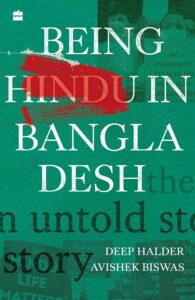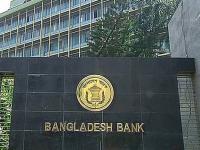Length 272 Pages Language English Publisher Harper Collins India Publication date 2023 November 23 Kindle price $ 9.99 Paperback ₹275.00
by Ghulam Suhrawardi 18 December 2023
Deep Halder had a career in journalism, while Abhishek is an Assistant Professor of English literature. Both write on and passionate about the subject of intersection of development, caste, and politics.
Deep Halder claims to have a voice in his head, the voice of someone he never met. His great-grandfather was from a wealthy family of Zamindars (landowners) from East Bengal (now Bangladesh).
In the past, before the partition of India in 1947, there were many Hindu Zamindars of much wealth in what once was East Bengal during the British colonial rule (1858-1947), which is Bangladesh today.
These feudal lords, who were predominantly Hindus, were colonially imposed exploitative and extractive class who lived off the peasants/sharecroppers who were made up mostly of Muslims and lower-caste Hindus. These Zamindars used to treat the peasants in the most unkind ways.
Many of these Zamindars, who would earn their money in the eastern part of Bengal, would transfer their wealth to Kolkata, then capital of Bengal, where they would buy beautiful villas and luxury apartments and live and flaunt their wealth earned through tears and toils of the peasants back home.
This is the backdrop of iniquitous Hindu/Muslim, Hindu rich/Muslim/Hindu peasant relationships in the pre-1947 East Bengal, now Bangladesh. This is the relationship that led to the partition of India into Hindu Majority India and Muslim Majority Pakistan, of which East Pakistan and now Bangladesh since 1971, was a part.
Fast forward. In the book’s opening chapter, the writers Abhishek Biswas and Deep Halder’s harrowing depiction of the Noakhali communal riots of 1946 paved the way for what is to come in other chapters.
The book narrated stories of ruthless murders of Hindus during the riots in pre-partition India, which indeed provides a grim picture of the brutalities perpetrated by the Bengali Muslims at the time. Abhishek’s grandmother, Smritikana Biswas, now ninety, saw those riots as a teenager. Thus, the book starts with a dramatic account of the murder of Hindus and the pillage of Hindu properties. Fast forward, he balances the Noakhali massacres with a massacre that happened in Marichjhapi in the Sundarbans, West Bengal, in 1978-79. A band of Dalit Hindu refugees escaped East Pakistan during the 1971 liberation war only to be massacred in Marichjhapi, West Bengal, this time, by Hindu thugs. Deep Halders book, “Blood Island: An Oral History of the Marichjhapi Massacre”, documents the Marichjhapi Hindu Dalit massacre by the Hindus quite vividly.
Whereas Deep Halder, the book’s co-author describes his childhood in an unauthorized refugee colony outside of Kolkata. It was a hard life for the entire family. Avishek, the book’s other author, has a similar background, a descendant of refugees from East Bengal. They became good friends and, over the years, exchanged stories about their ancestors from East Bengal and planned trips to Bangladesh, to the scenes of childhood memories.
They made the trip to Bangladesh in October 2021. Their Decision to visit Bangladesh seems to have been influenced by a communal disturbance in Comilla, a district HQ in Bangladesh which took place on October 13, 2021.
The communal disturbance involved someone placing a Quran at the feet of Lord Hanuman’s statue in a Puja Pandal. The incident angered the Muslims who took to the streets, attacked Hindu temples, broke idols of Hindu gods and goddesses ransacked Hindu homes, and set on fire several Hindu properties. Soon, this disturbance spread to other parts of Bangladesh, including Noakhali. Abhishek made many trips after this incident, and thus, the book’s plot begins.
The book becomes interesting when the authors get into the Bangladeshi politics. In 2001, a coalition of the Bangladesh Nationalist Party and the Islamist Jamaat-e-Islami won the election, replacing the India-friendly Awami League. The familiar game of victim mindset comes into play. The authors tell, without evidence stories of alleged systematic attacks by radical Islamists and Jamaat on the Hindu villages to drive them out of Bangladesh. The story then goes on to argue how Awami League leaders, including their head, Shiekh Hasina, saved the Hindus from the attacking Islamists.
To draw these conclusions, the authors have interviewed several people in Bangladesh. Most of these interviewees are the ruling Awami League leaders who have had the obvious political motivation to portray their political rivals in a bad light.
While briefly reviewing the Hindus occupying top positions in the bureaucracy, police, and industry, the book seems to have missed the main intent of Hasina’s appointment of Hindus in critical positions. These appointments are to please India, her mentor, rather than reflect her quality of tolerance. These coveted opportunities for the Hindus have been created by the India-friendly Hasina government, so much so that the number of Hindus in top positions constitutes up to 35% in some cases. Authors who so painstakingly depict Bangladesh as an unsafe place for Hindus should have investigated the number of Indians (95% Hindu) working in Bangladesh and that these Indians remit back home to the tune of ten billion dollars per year.
The authors credit Sheikh Mujibur Rahman, the Father of the Nation of Bangladesh, for his adherence to secularism as one of Bangladesh’s key governance principles and thus, they regard Mujib as a Hindu-friendly leader.
The authors, however, brand the latter administrations that followed Mujib, who veered into more Islamist ideology, as pro-Muslim and, by implication, as anti-Hindu.
The authors criticize the erasure of ‘secularism’ in Article 12 of the Bangladesh constitution in 1977 during Zia’s rule. Mr. Nitol Rai Chowdhury, a law minister, a Hindu of the India-friendly military-backed President Ershad, re-instated in the Constitution in 1988 “Islam” as the state religion. Later, Hasina inserted secularism in the 2010 constitution; with a clause that “Bangladesh will be a secular nation, but Islam is the state religion”. The authors would like to see Bangladesh secular in practice.
Authors credit Mujib’s daughter, Sheikh Hasina, for Bangladesh’s impressive economic growth over the last decade or so but miss the issue of national debt, which has risen to almost 100 billion U.S. dollars, and wanton loot and plunder that the “growth” has accompanied thereof. It is also believed, and this is something that the authors have not mentioned in the book, which is that in recent years, the Awami cronies have siphoned off overseas approximately 60 billion U.S. dollars through various money laundering schemes.
The central theme of the book seems to have delved around Hindu “persecution” in Bangladesh and how this is contributing to the gradual reduction of the Hindu population, which according to the authors, is declining annually. A 2022 census estimated that 7.6% of the population of Bangladesh are Hindus. Their hypothesis tries to argue that Islamic fundamentalists are the villains who are driving the Hindus out of Bangladesh. While it may be true that many Hindus are leaving Bangladesh, it is a figment of imagination to suggest that the Islamist Jihadists in Bangladesh, who are currently mostly in jail or hiding, are driving the Hindus out of Bangladesh.
Significant deterioration in the rule of law, democracy backslides, and misgovernance that are hallmarks of the current regime have intensified a sense of insecurity in the country for all Hindus and Muslims, and as a result, many Hindus and the Muslims are leaving the country.
Another important factor not acknowledged in the book but needs to be flagged is that since BJP/Modi’s ascent to power in 2014 and his government’s sectarian policies that systematically marginalize, harass, and persecute Muslims have been a source of much anguish and anger among the Muslims in the neighboring Bangladesh which do make Hindus somewhat vulnerable though so far, there has not been a single case of Muslim backlash against Hindus in Bangladesh.
This aspect of India’s anti-Muslim policy that angers Muslims in Bangladesh and, in the process, makes Hindus more vulnerable is a critical issue that needed to be mentioned but was not. This is an unfortunate, if not an unhelpful, omission in the book.
Finally, the book appears to have been published at a time when Bangladesh elections are due on 7 January 2024, a timing which somehow gives the impression the book has a political agenda, which is- to ring the bell of Islamophobia to legitimize continuation of Hasina’s pro-India autocratic regime.
In other words, the primary intent of the book “Being Hindu in Bangladesh,” which documents several past cases of Hindu persecution in Bangladesh and that some of these cases are true and regrettable, seems to pave the way and argue for the re-installation of the Hasina government which is an Indian-compliant autocratic government. This idea is not just disgusting but unhelpful for an enduring and mutually beneficial relationship between India and Bangladesh, and more importantly, such blatant advocacy for a government that has no respect for human rights and ruthlessly suppresses opposition would only worsen and not improve the security of the Hindus in Bangladesh.
The author is the Publisher of the Soouth Asia Journal.










